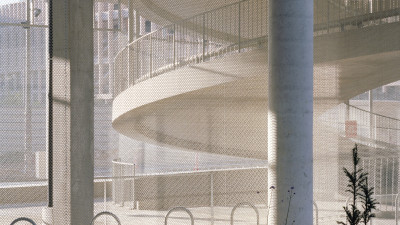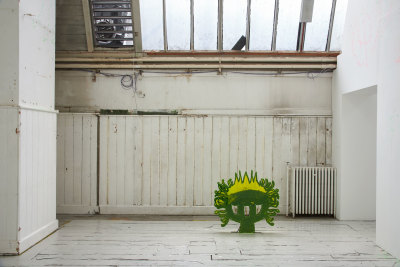How to read it: “the origin of the Corinthian order”
How to read it: “the origin of the Corinthian order”
By RA Collections team
Published 21 October 2016
Sir William Chambers’s beautiful 18th-century drawing tells an ancient story about the beginnings of architecture.
-
How and where architecture began is the subject of many myths, dating back to the writings of Vitruvius in the first century BC. Here’s what’s going on in this intricate, 18th-century drawing.
What is it?
Probably made around 1760, this drawing in black ink and grey, brown and red washes shows a capital – the decorative top of a column – in the Corinthian style, the last and most ornate category of the three established orders of classical architecture. Sir William Chambers, a founder member of the Royal Academy in 1768 and former architectural advisor to King George III, made it to tell the supposed story of how the Corinthian order was born in ancient Greece. In his seminal work, A Treatise on Architecture published in 1759, Chambers tells the story alongside a similar illustration of a basket with acanthus leaves. Based on an ancient Roman text by Vitruvius, the story is set in the ancient city of Corinth, around 50 miles west of Athens…
-
-

The story
The supposed origin of the Corinthian order, as told by Chambers:
“A young girl of Corinth being dead, her nurse placed on her tomb a basket containing certain trinkets in which she delighted when alive, and covered it with a tyle to prevent the rain from spoiling them. The basket happened to be placed on a root of Acanthus, which in the spring, pushing forth its leaves and sprigs, covered the sides of it; and some of them, that were longer than the rest, being obstructed by the corners of the tyle, were forced downwards, and curled in the manner of Volutes.
Callimachus, the Sculptor, passing near the tomb, saw the basket, and in what manner the leaves had encompassed it. This new form pleasing him infinitely, he imitated it on columns, which he afterwards made at Corinth, establishing and regulating, by this model, the manner and proportions of the Corinthian Order.”
Of course, Chambers may not have fully swallowed this old wives’ tale, but it did fit in neatly with his belief that classical architecture originated from the primitive structures of earliest man (another Vitruvius idea, developed by the French architectural theorist Abbé Laugier in the mid-18th century).
-
-
What else can I see in the picture?
At the bottom, you can see that the drawing is inscribed in Chambers’ hand: “Sir William Chambers, K.P.S.” The letters after his name allow us to date the inscription to post-1770 – he might have added this inscription some years after making the drawing – since in this year Chambers was made a Knight of the Polar Star by King Gustav of Sweden. King George III also recognised this honour, allowing Chambers to assume the rank and title of an English knight.
What else did Chambers do?
Sir William Chambers, a founder member of the Royal Academy in 1868. As the former architectural tutor to the future King George III and the leading architect in royal circles, he was a driving force behind the creation of the Academy and became its first Treasurer. He was also the architect of Somerset House, which included a suite of purpose-built rooms for the Royal Academy. These rooms are now the home of the Courtauld Institute Gallery.
What else is in the RA Collection?
The Royal Academy collection includes eight works by Sir William Chambers, including designs for Windsor Castle and Blenheim Palace. The collection also includes the Portrait of Sir William Chambers RA by Sir Joshua Reynolds, which is currently on display in the General Assembly Room at the Royal Academy of Arts. Sir William Chambers is featured in The Royal Academicians in General Assembly, 1795 by Henry Singleton.




